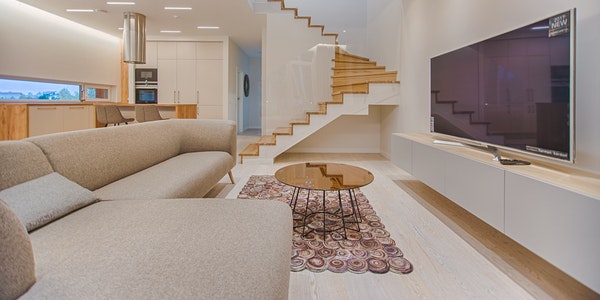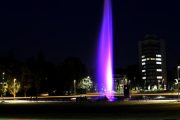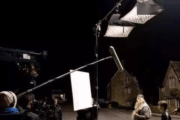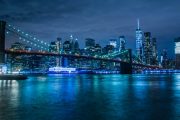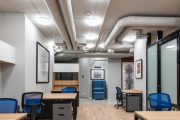The role of illuminance meter in daily life
Illumination has a close relationship with people’s lives. Adequate light can prevent people from accidents. Conversely, too dark light can cause fatigue to the human body far more than the eyes themselves.
Therefore, uncomfortable or poor lighting conditions are one of the main causes of accidents and fatigue. Existing statistics show that about 30% of all occupational labor accidents are directly or indirectly caused by insufficient light.
Stadiums (stadiums) have very strict requirements for lighting, too strong or dark lighting will affect the normal progress of the game.
So, what are the requirements for indoor contrast where people live?
Illuminance is a very important indicator in hygiene. Light refers to electromagnetic radiation that can cause people’s eyes to feel bright. The perception that light enters the eye is called vision. The light that people see refers to visible light, and its wavelength ranges from 380 to 760 nm (nanometers).
At present, daylighting can be divided into two categories: natural daylighting and artificial light sources.
Natural lighting refers to the natural illuminance of indoors and areas, with direct sunlight scattered light and reflected light from surrounding objects. Commonly used daylighting factor and natural illuminance to express.
The daylighting coefficient refers to the ratio of the effective area of the daylighting opening to the indoor land area. The daylighting factor of general residences is between 1/5 and 1/15, and the ratio of living area is between 1/8 and 1/10 (window area/indoor land area).
The natural illuminance coefficient is used to evaluate the illuminance level of natural light. It reflects the relationship between indoor and outdoor light irradiation. It also reflects the local light climate (the sum of natural light energy and climate sunshine illuminance indicators).
Illuminance standards in different places
In order to ensure that people live under suitable light, CIE has formulated hygiene standards for indoor (including public places) illuminance.
For example, the illuminance hygiene standard of shopping malls (shops) in public places is ≥ 100 Lx. The hygienic standard of countertop illuminance for libraries, museums, art galleries, and exhibition halls is ≥ 100 Lx. Public bathroom illuminance hygiene standard ≥ 50 Lx. Bathroom (drenching, pool, tub) ≥ 30 Lx. Sauna bathroom ≥ 30 Lx. The standards for indoor illuminance vary from country to country. For example, Germany recommends several rated light intensity, 300 Lx for office including clerical work area, 750 Lx for typing and drawing work.
In the factory, the illumination requirement for visual work on the production line is 1000 Lx. 200 Lx for hotels and public rooms. The reception point and cashier’s counter are 200 Lx. The shop window is 1500~2000 Lx. The hospital ward is 150~200 Lx. The emergency treatment area is 500 Lx. Schools and classrooms are 400-700 Lx. The canteen and indoor gym are 300 Lx, etc.
As for the measurement method of illuminance, it is generally measured with an illuminance meter. The illuminance meter can measure the intensity of different wavelengths (such as the measurement of the visible light band and the ultraviolet band), and can provide people with accurate measurement results.
In short, illuminance and human health, especially eye health, have extremely important hygienic significance. The correct indoor light source and good living habits can make you have a pair of bright and healthy eyes, which is your lifelong happiness.
Interior lighting design tips
At present, there are several lighting methods commonly used indoors. According to the spatial distribution of the luminous flux of the lamps and the installation method of the lamps, the indoor lighting methods can be divided into five types:
1. Direct lighting
The light is emitted through the luminaire, and 90%-100% of the luminous flux reaches the assumed working surface. This lighting method is direct lighting. This lighting method has a strong contrast between light and dark, and can create interesting and vivid light and shadow effects. Can highlight the dominant position of the working face in the entire environment. However, due to the high brightness, engineers should pay attention to preventing glare when installing lamps, such as factories and ordinary offices.
2. Semi-direct lighting
The semi-direct lighting method is that a lampshade made of translucent material covers the upper part of the light source. The lighting effect is that more than 60%-90% of the light is concentrated on the working surface, and 10%-40% of the covered light is diffused by the translucent lampshade and diffused upward. The light is relatively soft.
Such lamps are often used for general lighting in lower rooms. Because the diffused light can illuminate the flat roof, the height of the top of the room is increased, which can produce a higher sense of space.
3. Indirect lighting
The indirect lighting method is a lighting method of indirect light generated by shielding the light source. Among them, 90%-100% of the luminous flux acts on the working surface through the ceiling or wall reflection, and the light below 10% directly illuminates the working surface.
There are usually two treatment methods. One is to install the opaque lampshade on the lower part of the bulb, and the light is reflected to the flat top or other objects as indirect light. The other is to set the bulb in the lamp trough, and the light is reflected from the flat ceiling to the room as indirect light.
When this lighting method is used alone, pay attention to the heavy shadows at the bottom of the opaque lampshade. It is usually used in conjunction with other lighting methods to achieve special artistic effects. Places such as shopping malls, clothing stores, meeting rooms, etc., are generally used as ambient lighting or to increase the brightness of the scene.
4. Semi-indirect lighting
Semi-indirect lighting is the opposite of semi-direct lighting. It installs a translucent lampshade under the light source, and 60% ~ 90% of the light illuminates directly to the flat top to form an indirect light source. 10%-40% part of the light diffuses downward through the lampshade. This way can produce a special lighting effect, so that the lower room has a sense of heightened. It is also suitable for small spaces in residences, such as halls, aisles, clothing stores, etc. It is usually the most appropriate way to use this kind of lighting in a learning environment.
5. Diffuse lighting method
The diffuse lighting method uses the refraction function of the lamp to control the glare and diffuse the light around.
There are basically two forms of this kind of lighting, one is that the light emits from the upper mouth of the lampshade and the flat top reflects it , the two sides diffuse from the translucent lampshade, and the grille diffuse the lower part.
The other is to use a translucent lampshade to completely enclose the light to produce diffusion. This kind of lighting has soft light performance, comfortable vision, and is suitable for bedrooms.
Layout form of lighting
There are three types of lighting layout, namely basic lighting (ambient lighting), accent lighting and decorative lighting. Basic lighting is very popular in office spaces, while some lighting methods combining the three are popular in homes and some clothing stores. The specific lighting method depends on the scene.
Indoor lighting use coefficient method to calculate the average illuminance:
In the usual illuminance calculation, if we know the utilization factor “CU”, we can conveniently use an empirical formula to quickly calculate the average illuminance value of the indoor working surface we want. We usually call this calculation method “using the coefficient method to find the average illuminance”, also called the lumen coefficient method.
There are two types of illuminance calculation: rough calculation and accurate calculation. For example, suppose that the overall illuminance should be 100 lux (lx) like a house, and even 90 lux (lx) will not have a great impact on life.
However, if it is road lighting, the situation is different. Assuming that the road surface illumination must be 20 lux (lx), if it is only 18 lux (lx), it may cause frequent traffic accidents.
The same goes for the store. For example, the overall optimal illuminance of the store is 500 lux (lx). Due to the illuminance of 600 lux (lx), the number of lighting fixtures and power consumption will increase. This will have an impact on the economy of the family and the country.
No matter which kind of illuminance calculation is, it is important. Although it is only a rough estimate, there will be an error of 20%-30%. Therefore, we suggest that, in general, it is best to use professional lighting design software for accurate simulation calculations to control the error within the minimum range.
Calculation formula of illuminance
But sometimes we cannot use lighting software to simulate and calculate due to special circumstances or site conditions. In calculating the average illuminance of the floor, desktop, and work surface, people often use the following basic formula to estimate it slightly:
Illuminance (lux) = luminous flux (lumens lm) / area (square meter m2), that is, the average illuminance of 1 lux (lx) is the brightness of 1 lumen (lm) illuminating an area of 1 square meter (m2). When using this method to calculate the average illuminance of the floor surface of the room, in the case of the overall lighting fixture, the following formula will play an important role:
Average illuminance (Eav) = single luminaire luminous flux Φ × number of luminaires (N) × space utilization factor (CU) × maintenance factor (K) ÷ floor area (length × width)
Formula description:
1. The luminous flux of a single lamp Φ
It refers to the total luminous flux value of the naked light source contained in the lamp.
2. Space utilization factor (CU)
CU refers to how much of the light beam emitted from the lighting fixture reaches the floor and work surface. Therefore, depending on the design of the lighting fixture, the installation height, the size of the room and the reflectivity, the lighting rate also changes.
People generally use commonly used light panels in a space about 3 meters high. The utilization rate CU can be between 0.6 and 0.75. When the height of the aluminum cover of the chandelier is 6-10 meters, the utilization rate CU is between 0.7-0.45. Downlight lamps in a space of about 3 meters, the utilization coefficient CU can be 0.4-0.55. When people use lamps like light belt brackets in a space of about 4 meters, the utilization coefficient CU can be 0.3-0.5.
The above data are empirical values, just a rough estimate standard. If you want to accurately calculate the specific value, the company must provide it in writing, and the relevant parameters are only for reference here.
3. Maintenance factor
The maintenance factor means that as the lighting fixtures age, the light output capacity of the fixtures decreases. And as the use time of the light source increases, the light source attenuates. The spatial reflection efficiency will reduce due to the accumulation of indoor dust. This will also cause a decrease in illuminance.
Generally clean places, such as living rooms, bedrooms, offices, classrooms, reading rooms, hospitals, high-end brand stores, art galleries, museums, etc. The maintenance coefficient K is usually 0.8. The maintenance coefficient K of general stores, supermarkets, business halls, theaters, mechanical processing workshops, stations and other places should be 0.7. On the other hand, the maintenance coefficient K of places with larger pollution index is usually about 0.6.

